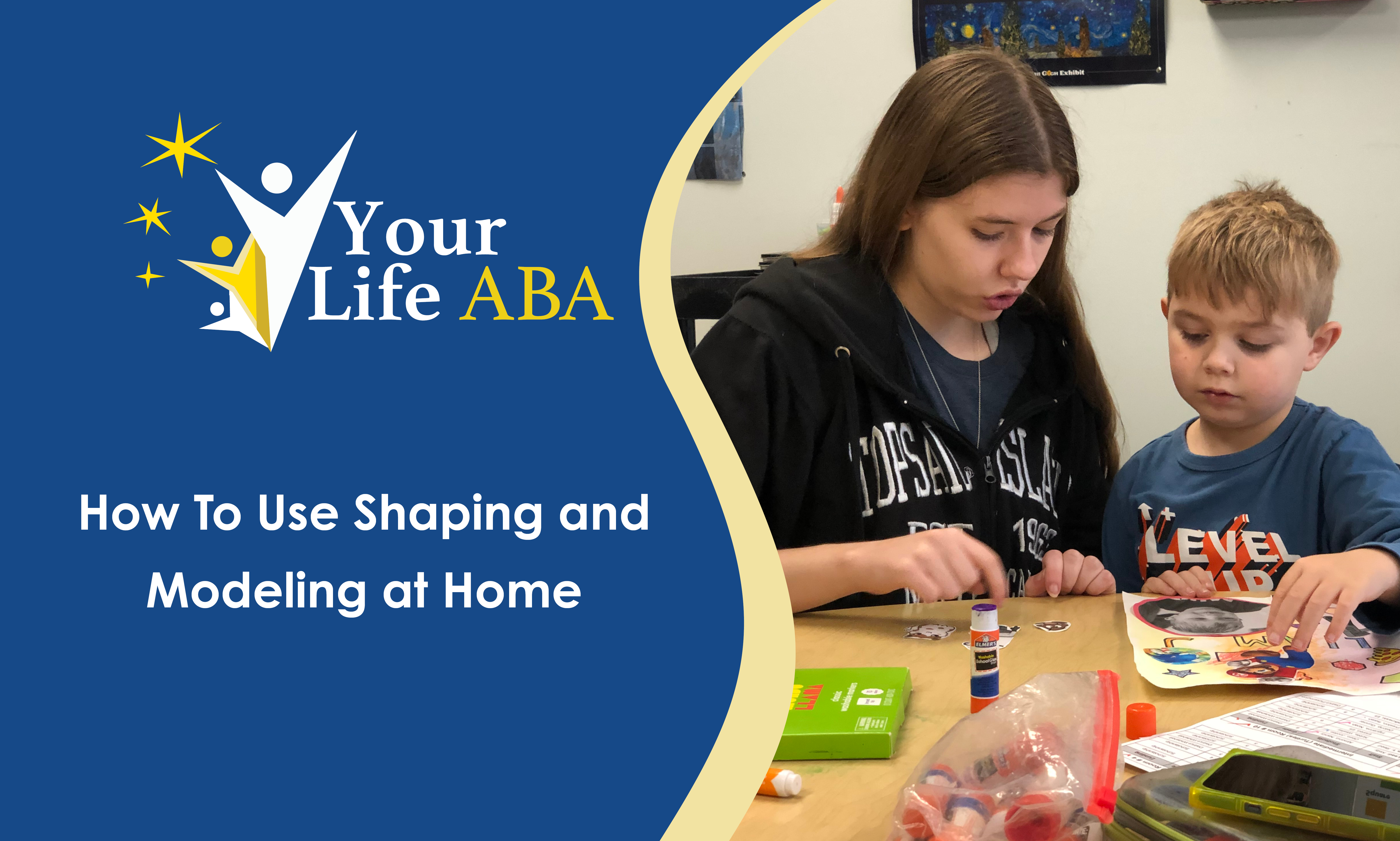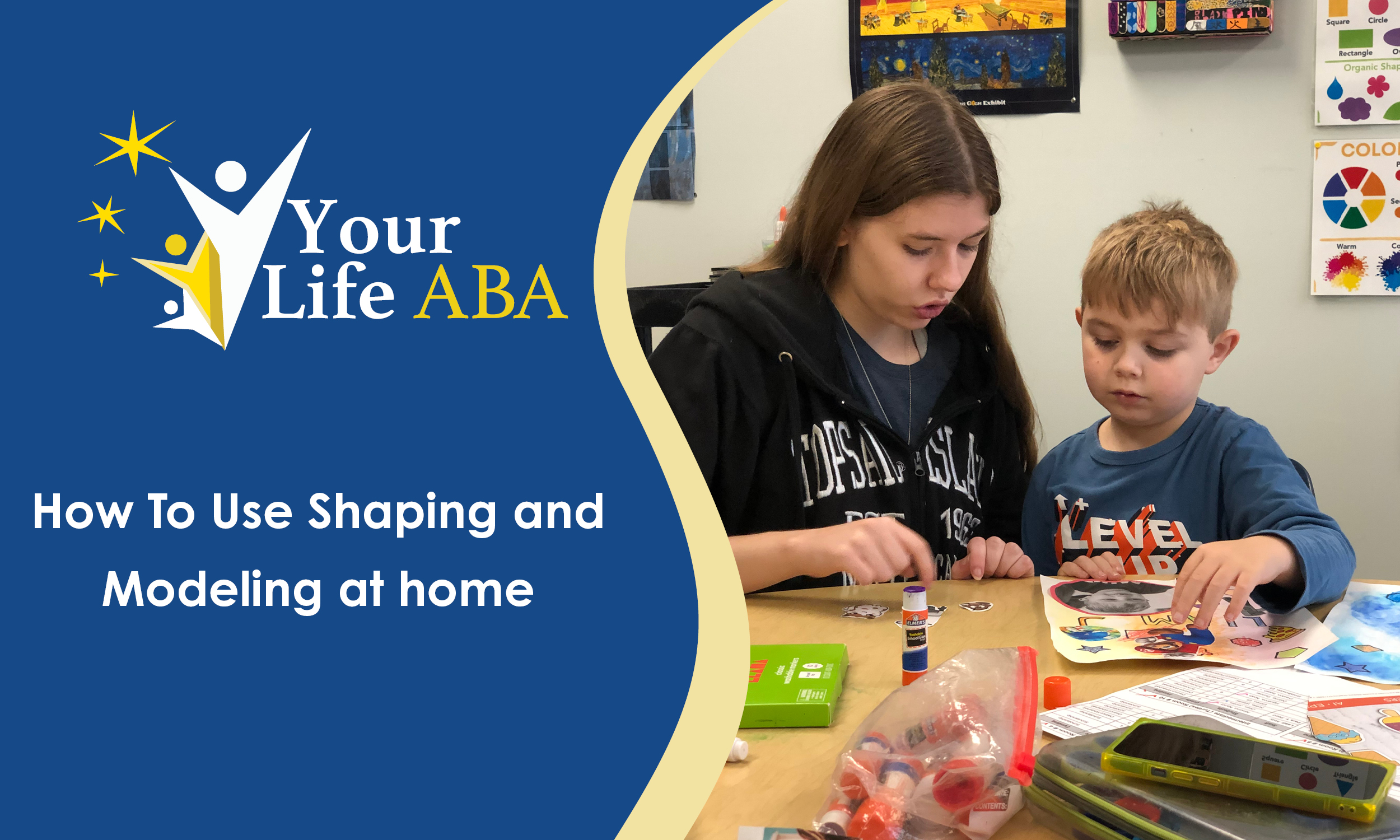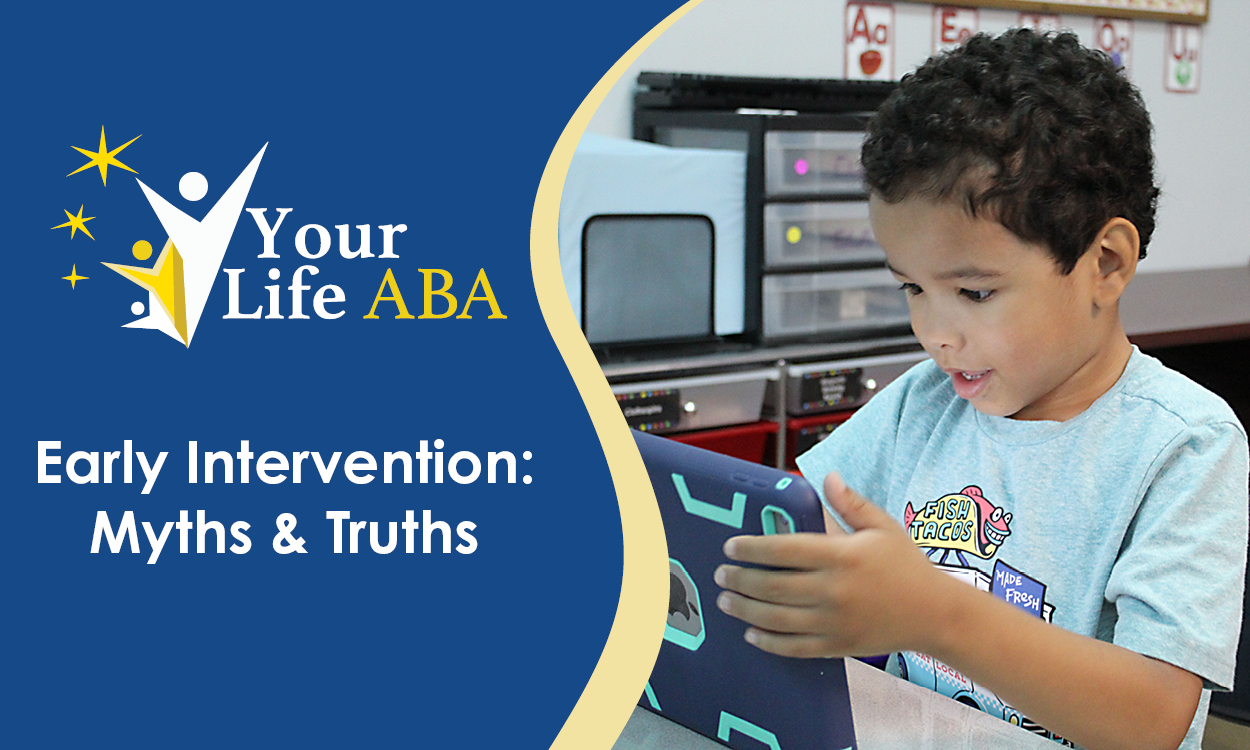How To Use Shaping and Modeling at Home
Posted: May 02, 2024 | Written By: Lauren Douglas | Category: At Home Help

By Erin Taylor, BCaBA
Adopting behavior analysis techniques at home like shaping and modeling can make a significant impact on a child's behavior and development. Shaping involves rewarding small steps towards a desired behavior, while modeling can be used to show a behavior for the child to imitate. Here are some tips and strategies, rooted in behavior analysis, that can be seamlessly incorporated into daily routines for parents and caregivers.
Shaping is sort of like building a staircase - one step at a time. If there’s a specific behavior you want to encourage in your child, break it down into smaller, achievable steps. For example, if you want to establish a morning routine, start by praising or rewarding your child for completing smaller tasks like getting dressed or making their bed. Slowly reward those more complex sequences until the desired routine becomes a natural part of their day.
Modeling is a powerful tool in shaping behavior by providing a visual example for your child to observe and follow. If kindness is the goal, consistently exhibit kind actions and words in your daily interactions. We learn typically by following an example, and modeling provides the opportunity to replicate the behaviors they see.
Consistency is crucial when utilizing shaping and modeling strategies. Be patient and persistent, offering positive reinforcement for each step toward the desired behavior. Celebrate small achievements to motivate your child and emphasize the importance of their efforts. Utilize praise, rewards, or a simple verbal acknowledgement to make the process enjoyable and encouraging.
Using shaping and modeling at home can empower parents to guide their children toward positive and functional behaviors. In breaking down larger goals into manageable steps and leading by example, parents can create a supportive learning environment at home, leading to growth and development. Be sure to work closely with your child’s BCBA to learn more about using these techniques at home.
Want to be notified of new articles and resources from Your Life ABA? Click here to submit your email and opt into our newsletter.








